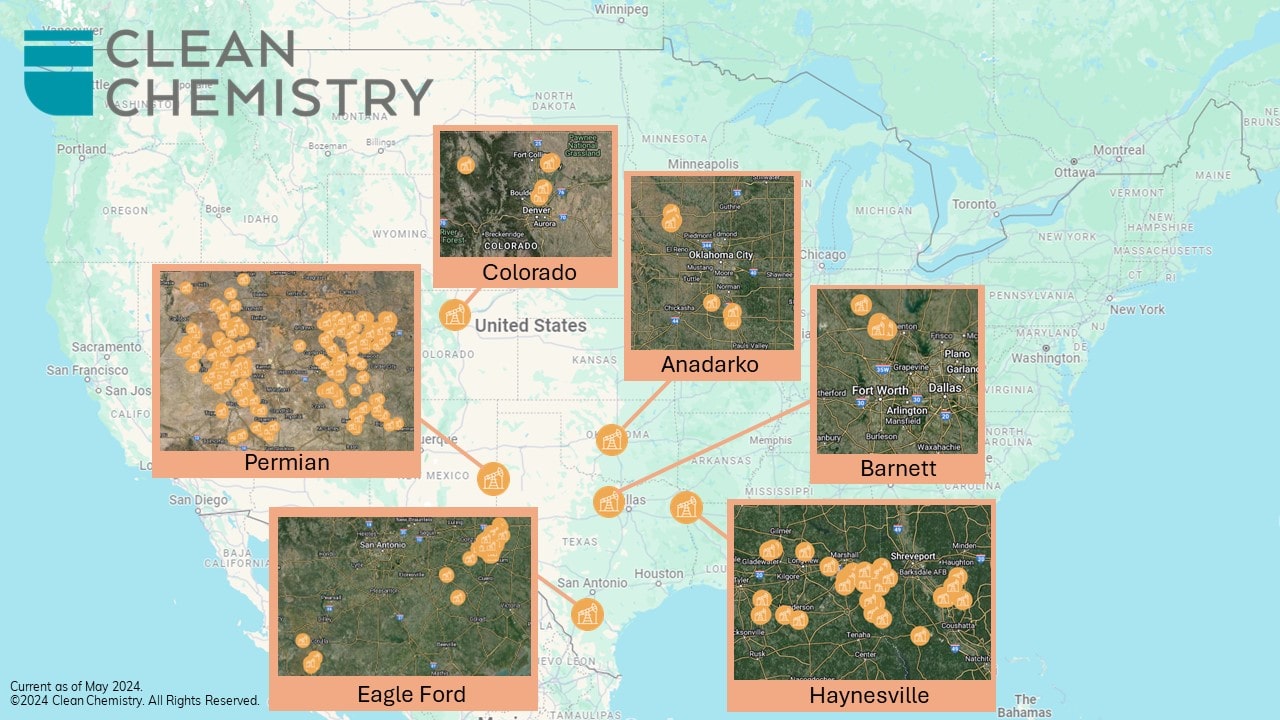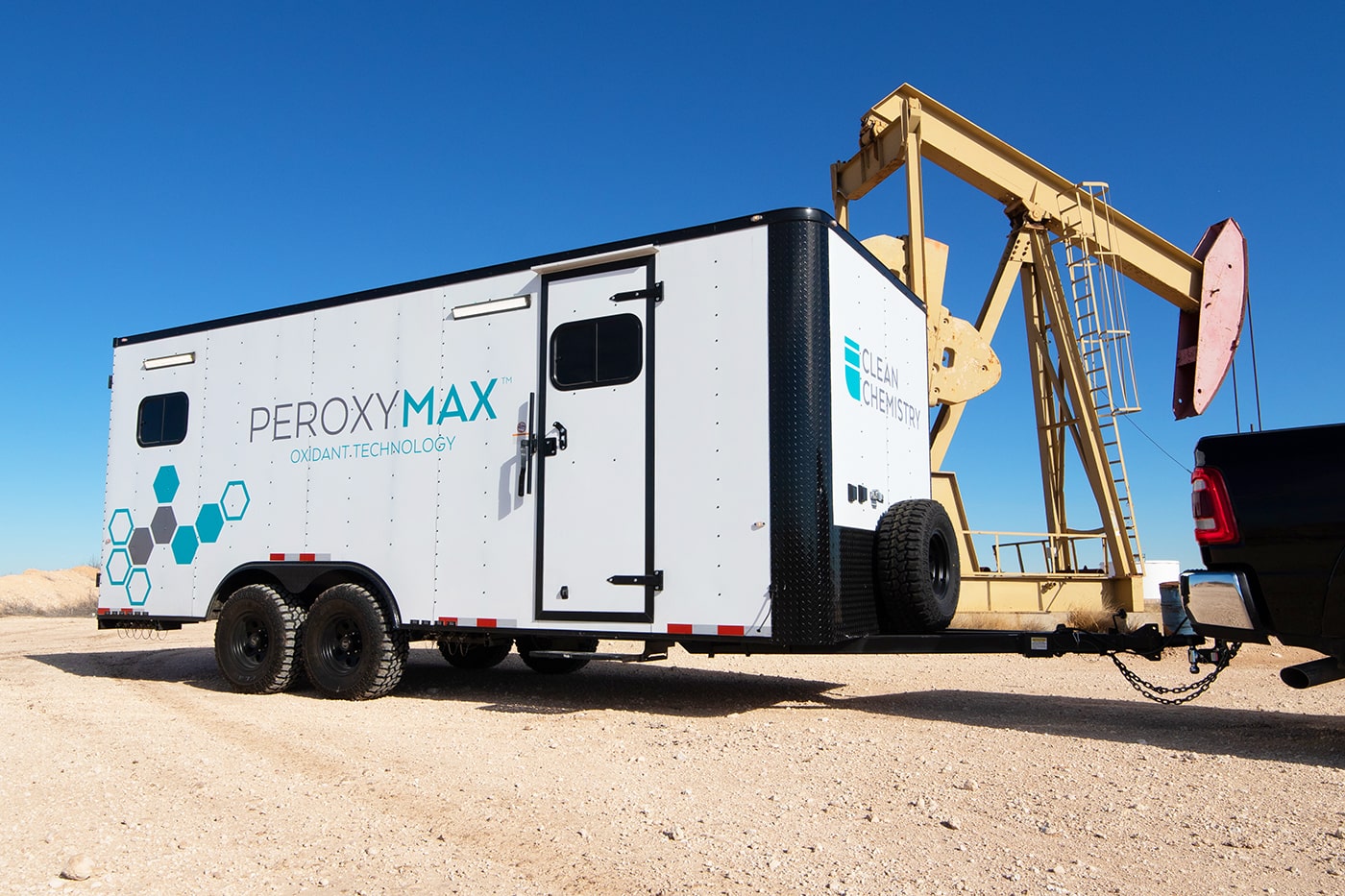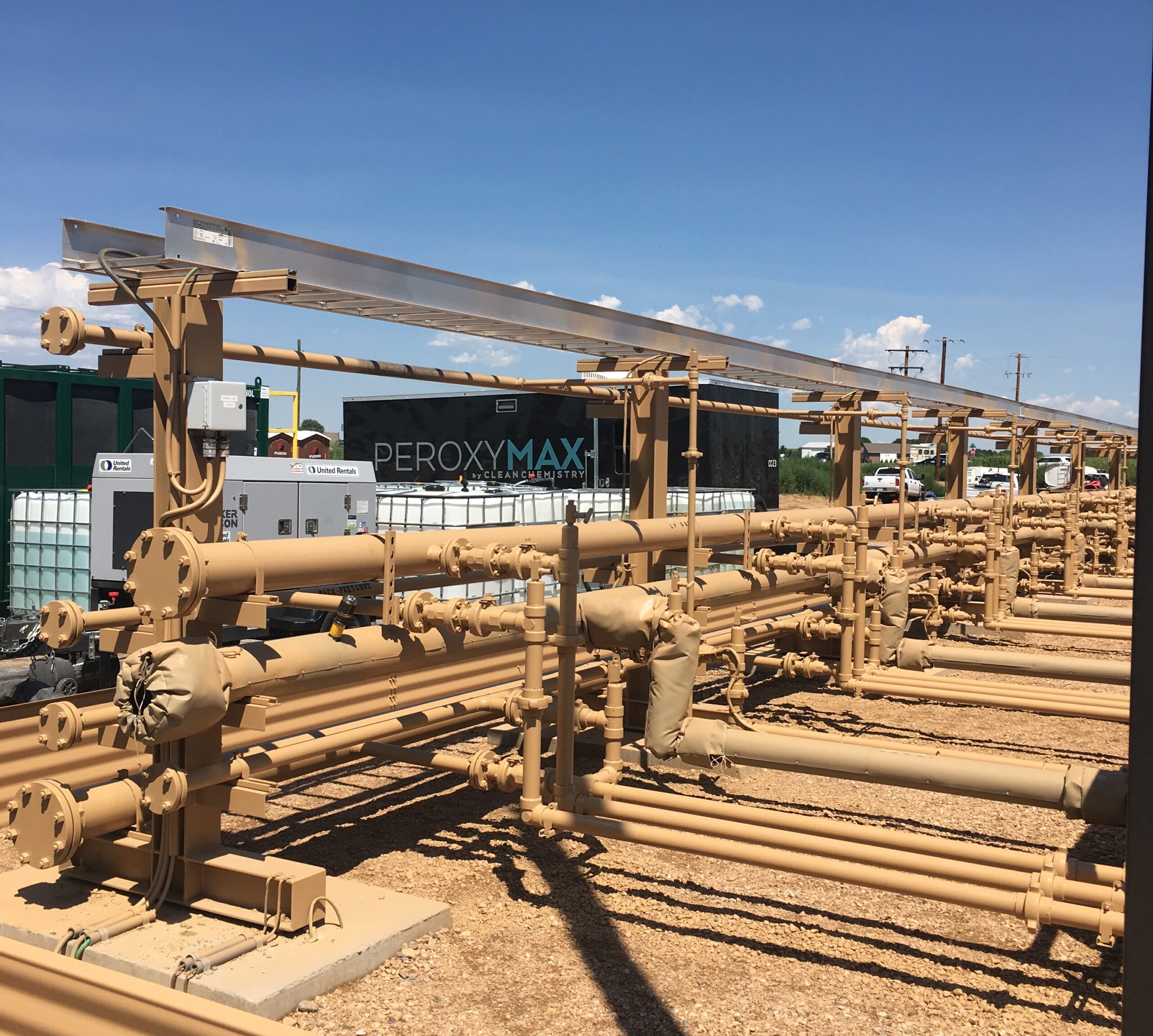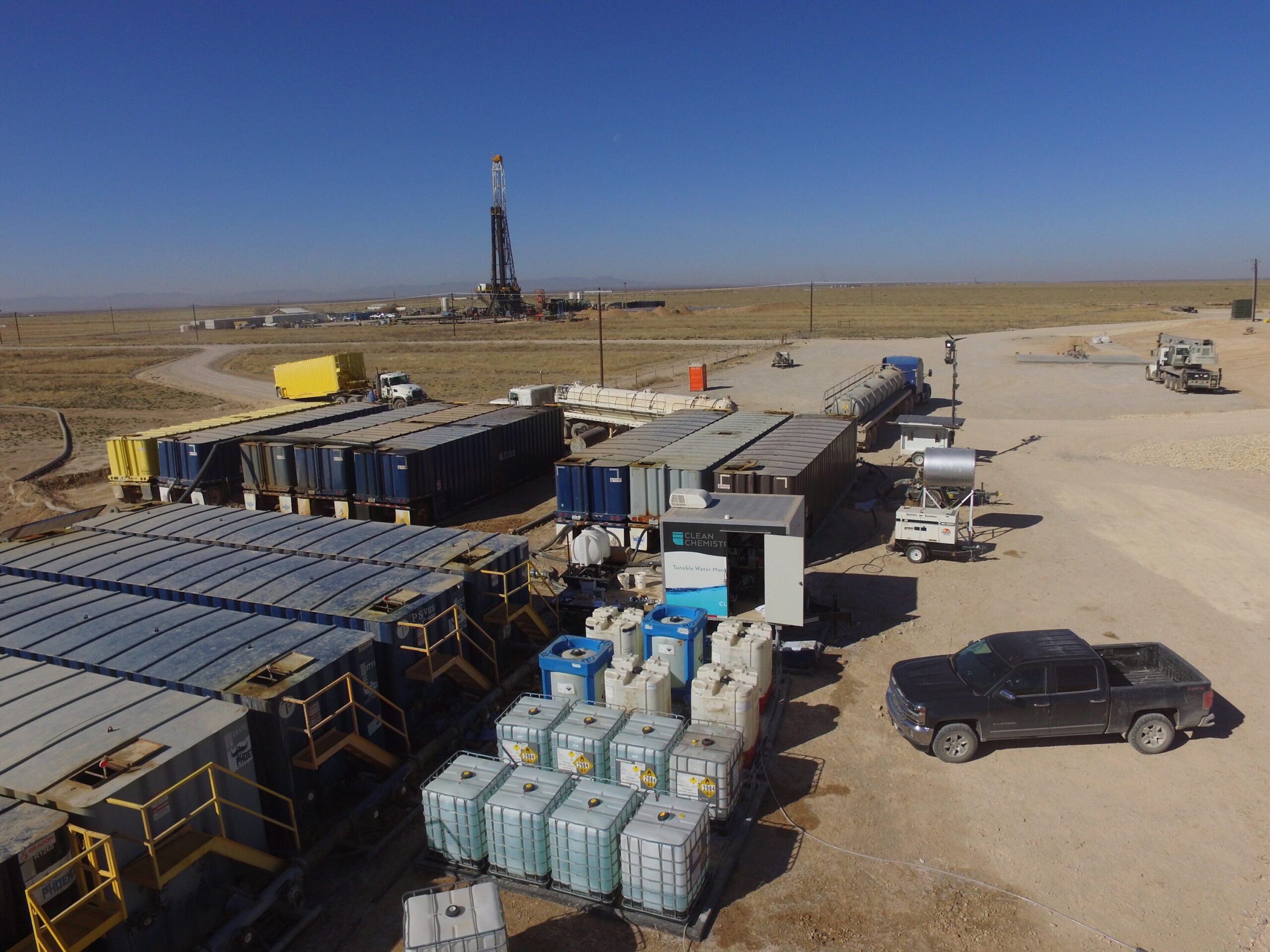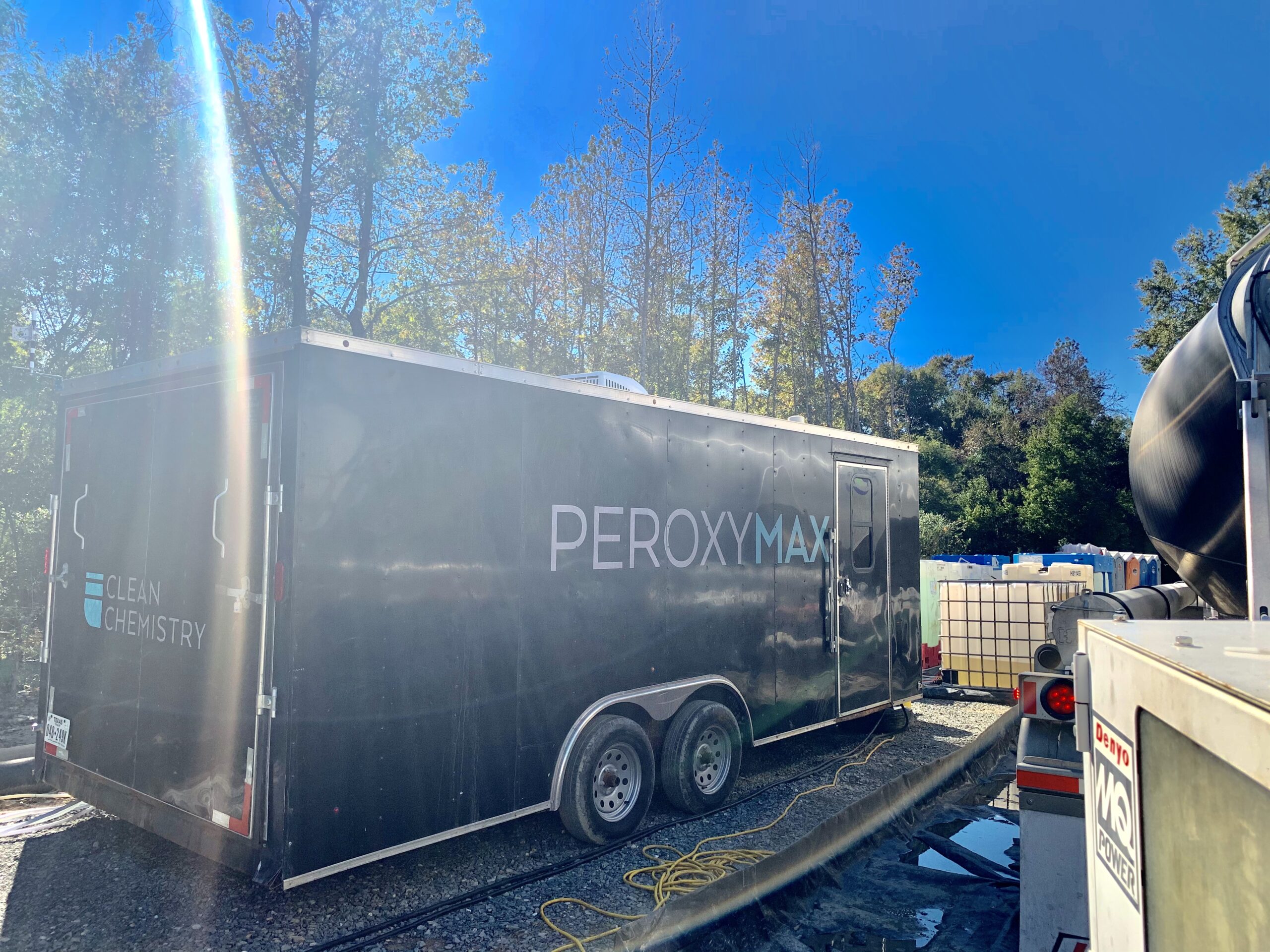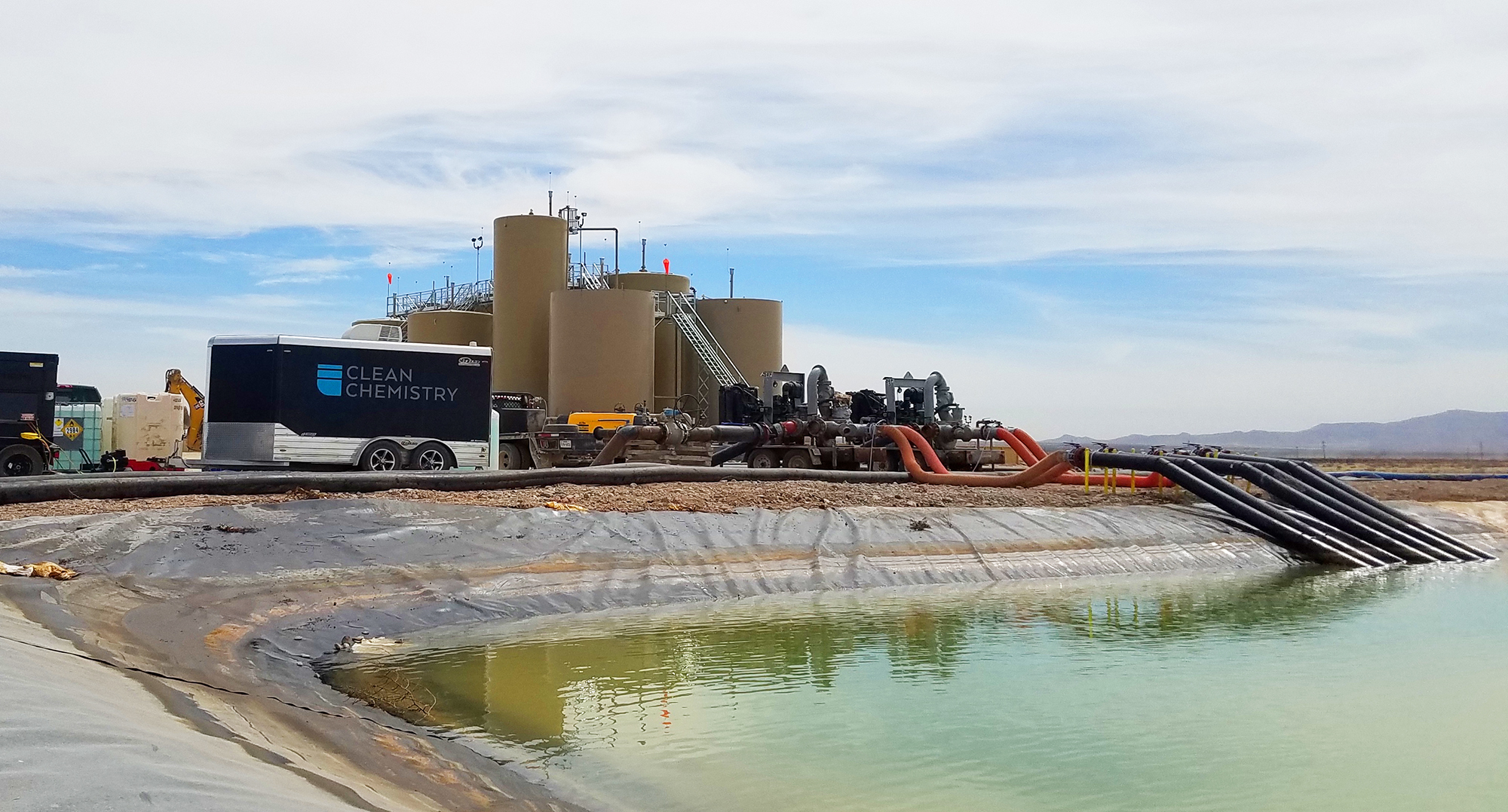Energy
Sustainable operations to continue our country’s energy independence.
Data Driven Results
Customers rely on thorough, quality data to ensure that the treatment program delivers the expected results. Clean Chemistry’s provides consistent, real-time monitoring and reporting of key performance indicators during the treatment. Oxidation Reduction Potential (ORP) monitoring, residual monitoring, ATP testing and post frac data are just some of the reports available. Data is remotely monitored by Clean Chemistry QC experts and the processes automated for quality, transparency and external customer viewing.
Green Chemistry
The goal of any business today should be safe, sustainable operations without damage to the environment. PeroxyMAX is a safer, more economical and less-corrosive alternative to traditional treatment chemicals. Its non-chlorine-based formulations mean it will not damage equipment, the formation or the environment. There are no chemical residuals and produced water can be safely disposed of.
With its proven technology, Clean Chemistry can help any company achieve it sustainability goals.
How Clean Chemistry Revolutionizes the Energy Industry
Fracturing
Reuse & Disposal
Midstream
Fracturing
Water treatment during hydraulic fracturing.
Clean Chemistry works with the customer to determine a comprehensive treatment strategy that brings value to the operation. PeroxyMAX, Clean Chemistry’s innovative oxidant technology, is at the heart of the water treatment and recycling program. PeroxyMax can be bundled with preservatives, scale inhibitors, clay control agents, iron control agents and surfactants and is compatible with friction reducers. The result is a bundled, well-specific treatment program tailored for microbial control, scale inhibition and iron control with the goal of long-term water health going into the production phase.
- Quick, effective bacteria control not achieved with traditional chemicals for treating water
- Simple, customizable, full-service treatment
- Less corrosive than other oxidative biocides, safe for use with frac iron and elastomers
- Small footprint allows for rig up at pad site or pit side
- Measures oxidation-reduction potential (ORP), residuals and ATP for treatment effectiveness, quality assurance and quality control
- Chemical dosing is optimized for any water source: fresh water, raw produced water and recycled produced water
- PeroxyMAX formulation is stable and non-flammable and is generated on-site from safe, liquid feedstocks
Post Well Completions
After the frac job is complete, Clean Chemistry continues to check well performance with post-job water testing. Typical post-job testing includes bottle-turn and ATP checks recommended at 30, 60 and 90-day intervals. Results are reviewed by the customer’s production engineering staff and Clean Chemistry QC experts to ensure that performance metrics have been met.
The PeroxyMAX Oxidation Technology Trailer
Produced water can turn into a valuable resource for completions and other wellsite operations if properly treated. Benefits include less or no freshwater sourcing—leaving more fresh water for agriculture and municipalities—reduced trucking costs and road wear, and reduced disposal costs. Clean Chemistry’s innovative chemistry, advanced treatment platform—now in a new mobile, trailer-mounted version—and extensive experience in onsite oil and gas industry water treatment give a unique perspective to design effective and practical water management programs.
Clean Chemistry has experience in wellsite treatment applications, including early flowback, produced water, high iron content, sulfides and hydrocarbons, and can tailor an exclusive treatment plan for any challenge.
Small Treatment System Footprint
Whether using a stationary system installed near the wellsite or pits, or our new PeroxyMAX™ oxidation technology trailer, Clean Chemistry provides quick delivery and low-cost mobilization. Plus, the site design can be tailored to meet the well’s flowrate requirements. In either option, the flexible treatment platform adjusts additive injection rates to meet changing water quality and produce a consistently treated product.
On-the-Fly vs. Conventional Clarification Treatment
Clean Chemistry provides high-performance chemistry programs for both on-the-fly and conventional treatment.
On-the-fly treatment of produced water is a lower-cost option when using blends of produced and freshwater. In this program, contaminants are stabilized in the water and are not separated out. This approach is useful in formations that can tolerate fine solids (generally less than five microns) and hydrocarbons in the frac fluid.
Conventional water reuse employs a chemical-physical clarification process for contaminant removal to meet cleaner water treatment specifications. For these operations, process automation and longer-term treatment installations help to manage costs.
- Greatly accelerated flocculation and clarification provide rapid solids separation with simple, standard equipment.
- In-line sensors enable automated dosing of oxidant and flocculation chemistries for reliable, consistent treatment quality.
- Flexible, bundled chemistry package includes oxidant, polymer and coagulant for specific customer requirements.
- Effective microbial control mitigates H2S risk, reduces the bacteria load and produces a measurable ORP response for real-time quality assurance and control.
- Highly selective oxidant technology targets contaminants, not equipment. It will not cause pitting or damage to lay-flat hose, seals, fittings or steel.
Disposal
Clean Chemistry can also treat produced water for environmentally safer disposal. The flexibility of our water treatment service, enabled by our proprietary PeroxyMAX chemistry and used in combination with onboard sensors and treatment diagnostics, results in a cost-effective and reliable treatment program.
PeroxyMAX removes bacteria from wastewater before it is injected into saltwater disposal (SWD) wells. This safer, environmentally friendly disposal method can enhance a company’s environmental and sustainability initiative.
Get Started with Clean Chemistry
"*" indicates required fields
